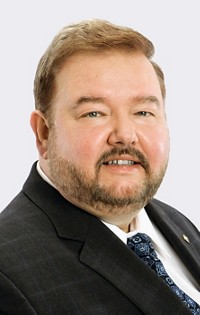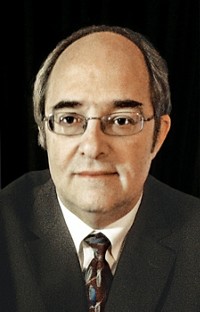Advertisement
Grab your lab coat. Let's get started
Welcome!
Welcome!
Create an account below to get 6 C&EN articles per month, receive newsletters and more - all free.
It seems this is your first time logging in online. Please enter the following information to continue.
As an ACS member you automatically get access to this site. All we need is few more details to create your reading experience.
Not you? Sign in with a different account.
Not you? Sign in with a different account.
ERROR 1
ERROR 1
ERROR 2
ERROR 2
ERROR 2
ERROR 2
ERROR 2
Password and Confirm password must match.
If you have an ACS member number, please enter it here so we can link this account to your membership. (optional)
ERROR 2
ACS values your privacy. By submitting your information, you are gaining access to C&EN and subscribing to our weekly newsletter. We use the information you provide to make your reading experience better, and we will never sell your data to third party members.
Environment
AIChE Recovers Its Footing
After years of net deficits, chemical engineering society announces 'dramatic financial turnaround'
by Sophie L. Rovner
June 26, 2006
| A version of this story appeared in
Volume 84, Issue 26
Just a few years after facing the threat of insolvency, the American Institute of Chemical Engineers is enjoying a reversal of fortune. "There were a lot of difficult steps AIChE took in the past few years, and we can now see the fruits of our hard labor," says John C. Chen, the society's president.
Executive Director John A. Sofranko adds, "We are not only in a position to celebrate our financial success, but we are improving the services we provide to our members. There is a renewed strength and purpose that everyone involved with AIChE seems to share."
The nonprofit professional society, which was founded in 1908, began operating at a deficit in 1999. In terms of net assets, its worst year was 2003, when its net deficit reached $3.4 million. Over the next two years, AIChE turned the situation around, achieving positive net assets of $1.1 million by 2005. The society hopes to boost that number to $3.0 million by 2007 and more than $6.0 million long-term.
Several factors contributed to AIChE's financial downturn. The recession that developed after the Sept. 11, 2001, terrorist attacks reduced the number of employers willing to pay for their employees' membership in professional organizations, Sofranko says. Also, after the attacks fewer people wanted to travel. Their reluctance cut into attendance at meetings and continuing education courses and diminished revenues for AIChE.
Furthermore, the number of companies in the chemical enterprise is shrinking, Sofranko adds. "With that consolidation, and with productivity increasing, there are fewer folks doing research and fewer folks doing engineering." And a lot of the major new plant construction—and the demand for chemical engineers—is taking place in China, the Middle East, and Southeast Asia rather than in the U.S., he says.
As a result of these trends, AIChE membership, which stood at a high of 56,000 in 1993, has dropped to 40,000 currently. Sofranko believes the level will stabilize this year, however. In part, that's because the organization is increasing its international membership, as demand for chemical engineers rises abroad.
AIChE is also working to become more inclusive, reaching out to students, to chemical engineers in biotechnology and in the electronic chemicals and materials fields, and to people in the fields of biology and nanotechnology.
AIChE made some tough decisions to claw its way back into the black. The society initiated a restructuring plan in 2003, cutting its staff size to 40 from a peak of 107 in 2001. AIChE also reduced its pension liabilities, relied more on volunteer work by its members, and leased out three-fourths of the office space at its New York City headquarters.
The society is benefiting from rising attendance at its meetings and seminars. And it has cut costs by forming a partnership with the American Society of Mechanical Engineers to run its professional and technical training course program for members and another partnership with John Wiley & Sons to publish three of the society's journals.
Sofranko notes that AIChE's publishing program was small—on the order of $3 million in annual revenues—when it initiated the partnership with Wiley. That partnership has allowed AIChE to benefit from the commercial publisher's large scale to make improvements that otherwise would have been impossible. For example, Wiley digitized the back issues of AIChE's journals and made them available online. As an added benefit, Wiley took on a number of AIChE's former staff.
AIChE is open to other partnerships, and in fact was considering a merger with the American Chemical Society back in 2003. Ultimately, the two organizations decided to remain independent, but they cooperate in a number of activities. For instance, they worked together on a white paper for Congress about U.S. energy policy. Every couple of years, AIChE and ACS jointly host a management conference for chemists and chemical engineers who are chief technology officers and vice presidents of research.
AIChE has scheduled its April 2008 national meeting to coincide with the ACS national meeting in New Orleans. The two organizations are jointly planning programming that will interest and broaden the horizons of both types of members, Sofranko says. A chemical engineer may learn about an innovation in the lab, while a chemist may learn something about commercialization. "Chemists and chemical engineers need to work together very closely," Sofranko says. Promoting interaction between the professions will allow "chemists to understand the value that engineers can bring to the innovation process and vice versa."
Sofranko urges other organizations that might face the same challenges as AIChE not to "simply say, 'Let's just cut costs.' Try to be creative about how you do it." He is guided in part by a concept known as coopetition. The idea, Sofranko says, is to "learn how to cooperate with people who may also be your competitors."






Join the conversation
Contact the reporter
Submit a Letter to the Editor for publication
Engage with us on Twitter